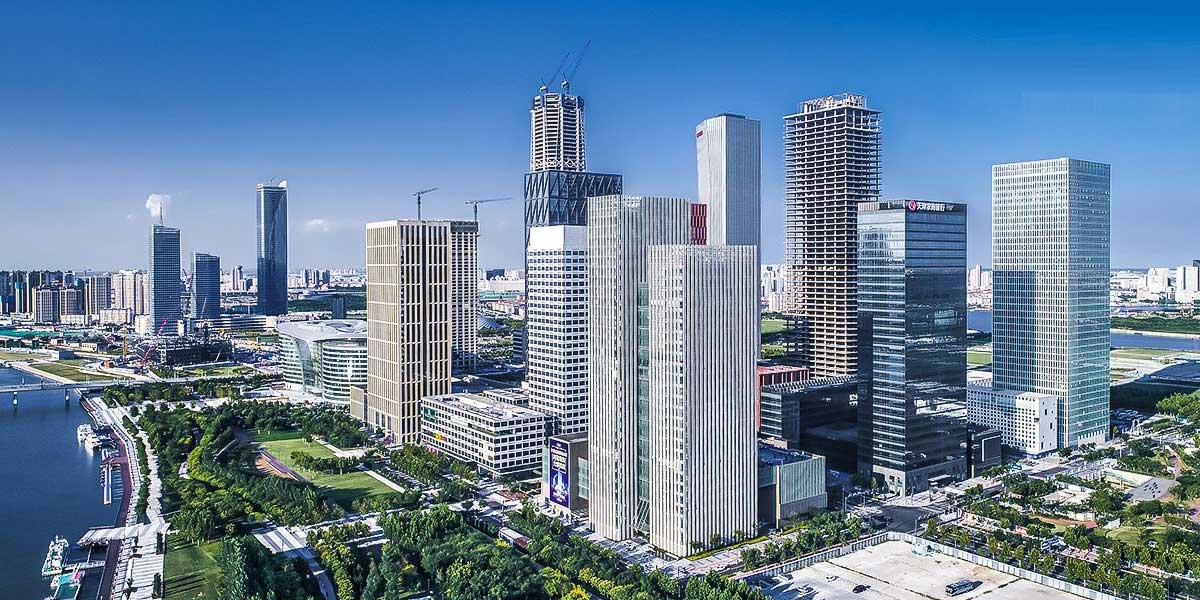

The Mumbai Eastern Waterfront is one of the most ambitious and exciting projects planned for the Maximum City. In this first of two articles in the series, Ashish Puntambekar, who has been involved in the project, writes what inspired a central business district in the project. A session in the Construction World Maharashtra virtual conference on April 28 discusses the Mumbai Eastern Waterfront project.
_________
The Mumbai Eastern Waterfront is one of the 15 projects among the $234 billion Construct Maharashtra initiative. The objective of this construction initiative is to create 26 million new jobs and to raise the standard of living for all residents of Maharashtra. A number of these projects are self-financing and spread across both urban and rural Maharashtra. Of these 15, nine are located in the Mumbai Metropolitan Region (MMR). At $45 billion, the Mumbai Eastern Waterfront is the largest. Located in MMR, it includes 12 distinct projects.
The Financial district and the supertall building complex is the most significant.
Overview of financial centre and business precinct. When fully constructed by 2026 with a projected cost of $4.18 billion, the proposed financial centre and supertall building complex will be the jewel in the crown among real estate development projects in Asia. This 60-acre development will contain a massive financial centre and office complex, including large convention centres.
In addition, another $4.5 billion will be invested in a business and entertainment precinct spread over the balance 60 acres in an adjacent plot that will accompany the financial centre / supertall building complex. This proposed 60-acre facility will include luxury hotels, high-end residential facilities, two unique theme parks, an Ocean World and a bird park.
The Mumbai Disneyland theme park will be spread over 150 acres and located 2 km from the complex on reclaimed land. It will also serve as the southern tip of the 18-km East Central Park that will run right up to the new affordable housing locations in Mahul to the north. The affordable housing facilities will be built on the area currently occupied by the RCF, BPCL, HPCL and Tata Power plants in Chembur and Mahul.
Construction of Mumbai Disneyland will begin within two years from the start of construction of the financial centre.
A discussion was held in 2009 with Mr Anton Davies of RWDI Canada. RWDI had worked on both these iconic projects, and the objective was to use some of the conceptual ideas for the design of the financial centre along Mumbai’s Eastern Waterfront.
The discussion with Mr Davies focused on the seismic design and the wind design of the two buildings and the structural considerations therein.
Taipei 101 at 508 m is one of the most stable buildings ever constructed, as it can take wind speeds of 216 kmph and can withstand strong earthquakes of upto a magnitude of 7.3 on the Richter scale.
RWDI’s unique design of Taipei 101 included a steel ball of 660 tonne suspended between the 92nd and 87th floors to damp the oscillations due to seismic forces, so that people could feel comfortable in the building even if an earthquake struck.
This choice of structural design had large implications for the financial centre and the supertall building complex and its configuration.
-One structure of around 660 m
-Three other iconic buildings within its precinct of height 400 m each.
Each of these four buildings would be based on a unique concept, and together occupy an area of around 60 acre within the current Mumbai port area. The total cost of this complex is estimated at $4.18 billion━more than twice the cost of the Burj Khalifa. In comparison, the Burj Khalifa cost $1.7 billion and Taipei 101 cost $1.9 billion.
The adjoining 60-acre business precinct would include two unique theme parks and a bird park (similar to Jurong in Singapore). One of the Theme parks will have a unique Indian design and will be unlike any other theme park globally.
Besides these theme parks, the second precinct will have hotels and high end residential facilities and second rung business parks for smaller businesses.
The 150-acre Mumbai Disneyland is a separate project which will be part of a 7.5 km x 1.5 km reclamation and its cost is not included in this rough estimate. However, we believe that this reclamation that is based on a unique concept, will help pay for the redevelopment of the entire waterfront to world class standards.
In the concluding part of this article, the author discusses the Mumbai Eastern Waterfront project in regards to the issues in the current port redevelopment plan.
Author: Ashish Puntambekar is the initiator of the Construct India Mission, which has received official sponsorship from the union commerce ministry. He has been a strategic planner especially in energy and infrastructure domains at Reliance Industries, an expert at international banks and journals, and the lead designer for the Defence Industrial Corridor.
Also read: Mumbai Eastern Waterfront project: Redevelopment opportunities galore